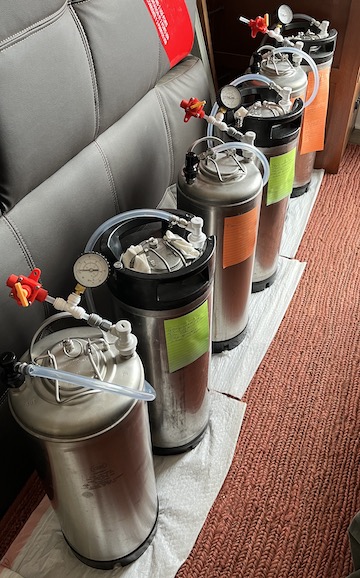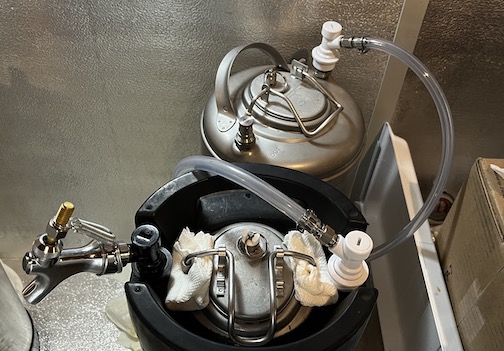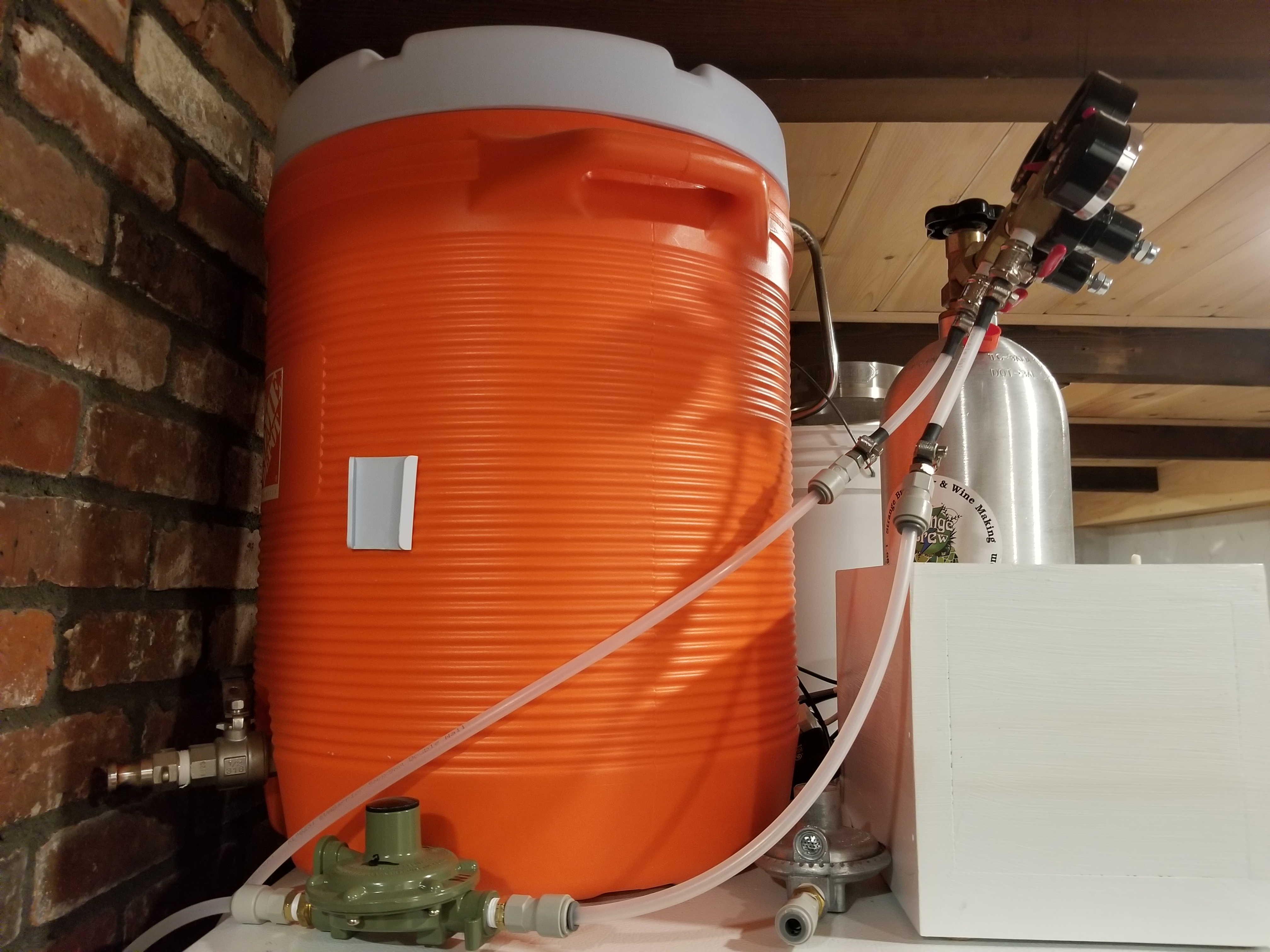Cider Wraith
Well-Known Member
Here are three batches with the black-topped trimmed liquid tube fermenters purging servers and being pressure fermented to about 18 PSI which after refrigeration, usually drops to about 12 PSI. Shown here are gas posts to liquid posts jumpers.

The furthest back combo with the longest label is the fifth use of that yeast and not intending to reuse it won't bother to transfer to server. However, still going to leave it jumpered to it's server to pick up an additional five gallons of headspace for additional serving pressure. Shown here gas post to gas post jumper.

My guess is that will largely serve the three gallons, might lose a bit of carbonation, just free piggy-backed pressurized CO2.
Another option to run tankless would be to pressure ferment and at the height of fermentation burst up to about 30 PSI + and purge and pressurize an empty clean keg up to that PSI and then disconnect. A regulator would be nice to have but with that 30 PSI pressurized keg you've got a free tankless CO2 source. Another thought would be to either stay at 18 PSI or burst up to 30 PSI or higher and do that with three kegs daisy-chained to capture fifteen gallons of CO2 under pressure and you could guarantee that would serve a keg of beverage. In that case a regulator would be nice and for practical purposes would simulate an actual CO2 tank, I would guess.
Lots of options if you have the time, equipment, space, creativity and motivation.

The furthest back combo with the longest label is the fifth use of that yeast and not intending to reuse it won't bother to transfer to server. However, still going to leave it jumpered to it's server to pick up an additional five gallons of headspace for additional serving pressure. Shown here gas post to gas post jumper.

My guess is that will largely serve the three gallons, might lose a bit of carbonation, just free piggy-backed pressurized CO2.
Another option to run tankless would be to pressure ferment and at the height of fermentation burst up to about 30 PSI + and purge and pressurize an empty clean keg up to that PSI and then disconnect. A regulator would be nice to have but with that 30 PSI pressurized keg you've got a free tankless CO2 source. Another thought would be to either stay at 18 PSI or burst up to 30 PSI or higher and do that with three kegs daisy-chained to capture fifteen gallons of CO2 under pressure and you could guarantee that would serve a keg of beverage. In that case a regulator would be nice and for practical purposes would simulate an actual CO2 tank, I would guess.
Lots of options if you have the time, equipment, space, creativity and motivation.
Last edited:








































![Craft A Brew - Safale BE-256 Yeast - Fermentis - Belgian Ale Dry Yeast - For Belgian & Strong Ales - Ingredients for Home Brewing - Beer Making Supplies - [3 Pack]](https://m.media-amazon.com/images/I/51bcKEwQmWL._SL500_.jpg)



















